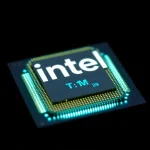Intel XeSS 3 Introduces Multi Frame Generation for Enhanced AI Performance

As the gaming industry continues to evolve, the demand for cutting-edge technologies that enhance visual performance and frame rates has never been higher. Intel’s latest innovation, XeSS 3, not only aims to compete with NVIDIA’s advancements but is also set to redefine the user experience in gaming. This technology introduces the concept of Multi-Frame Generation, promising to significantly boost performance by generating multiple frames through artificial intelligence. Let's delve deeper into what this means for gamers and hardware enthusiasts alike.
Understanding Intel XeSS 3 and Multi-Frame Generation
Intel's XeSS 3 marks a significant leap in their graphics technology. With the introduction of Multi-Frame Generation (MFG), Intel aims to enhance the gaming experience by creating synthetic frames between rendered frames. This innovative feature allows for up to four AI-generated frames to be added, as opposed to the traditional method of generating just one frame. The result? A smoother and more fluid gameplay experience that caters to the demands of modern gaming.
The technology leverages the AI hardware integrated into Intel GPUs, which synthesizes intermediate frames to improve motion smoothness, especially at higher refresh rates. This capability mirrors that of NVIDIA, effectively putting Intel on par with its competitor in the realm of frame generation technology.
What makes XeSS 3 particularly noteworthy is its applicability across various gaming environments. For instance, titles like Battlefield 6 are pushing boundaries when it comes to graphical fidelity and performance requirements. The game specifies the need for advanced technologies like Multi-Frame Generation to achieve optimal performance at 4K resolution and 240 FPS.
How Does Multi-Frame Generation Work?
The mechanics behind Multi-Frame Generation are straightforward yet sophisticated. By utilizing advanced algorithms, XeSS 3 analyzes the rendered frames and calculates the additional frames needed to fill the gaps, creating a seamless transition in motion. The key benefits include:
- Enhanced Fluidity: Games feel smoother, reducing stuttering and lag during intense sequences.
- Higher Performance: More frames mean more visual information is processed, leading to a more immersive experience.
- Greater Hardware Efficiency: By optimizing frame generation through AI, the need for excessive hardware upgrades may be diminished.
This technology not only enhances gameplay but also optimizes the overall performance of Intel GPUs, making them viable options for high-performance gaming.
Comparative Analysis: Intel vs. NVIDIA and AMD
The competitive landscape between Intel, NVIDIA, and AMD has been a focal point for gamers and tech enthusiasts. With the introduction of XeSS 3, Intel aligns itself closely with NVIDIA, particularly in terms of frame generation capabilities. Here’s a comparative overview:
| Feature | Intel XeSS 3 | NVIDIA DLSS 3 | AMD FSR |
|---|---|---|---|
| Frame Generation | Up to 4 AI-generated frames | Supports frame generation | No multi-frame generation |
| Hardware Dependency | Intel GPUs | RTX 40 series and higher | Compatible with various GPUs |
| Performance Boost | Significant | Substantial | Moderate |
| Openness | More accessible to various hardware | Proprietary | Open-source |
As the table illustrates, while NVIDIA offers robust performance, Intel's XeSS 3 provides advantages in terms of accessibility and the ability to generate more frames, potentially attracting users from different hardware backgrounds.
Challenges and Future Outlook for Intel XeSS 3
Despite the promising features of XeSS 3, Intel still faces challenges in the graphics market. As a relatively new player, the company must establish its technology as a preferred choice among gamers. One of the primary hurdles is the understanding and acceptance of AI-driven enhancements, especially for users who are accustomed to traditional rendering methods.
Moreover, the lack of a clear launch date for XeSS 3 raises questions about its immediate impact on the market. Intel's rapid development cycle is commendable, but the company needs to ensure that their products meet gamer expectations. Key factors will include:
- Performance Benchmarks: Gamers will look for tangible improvements in frame rates and graphical fidelity.
- Compatibility: Ensuring that XeSS 3 works seamlessly with existing titles will be crucial.
- Developer Support: Engaging game developers to integrate this technology into upcoming releases will enhance its adoption.
Intel's position as a newcomer in the dedicated graphics market means that their success will largely depend on how effectively they navigate these challenges.
Conclusion: The Future of Gaming with Intel XeSS 3
As Intel continues to innovate with technologies like XeSS 3 and Multi-Frame Generation, the implications for the gaming community are profound. By enhancing performance and fluidity, Intel not only positions itself as a serious competitor in graphics technology but also opens the door for gamers to experience more immersive and visually stunning gameplay. With the right execution, XeSS 3 could redefine the standards of gaming graphics.
For more insights into the evolution of graphics technologies, check out this informative video:




Leave a Reply